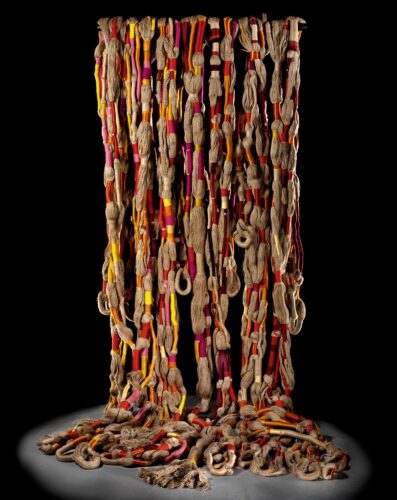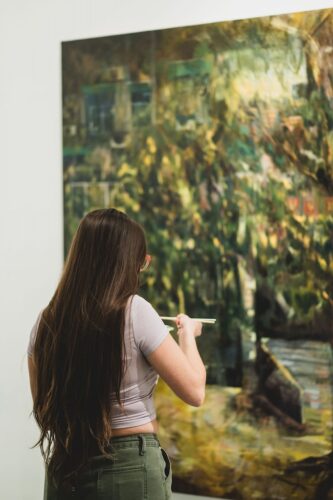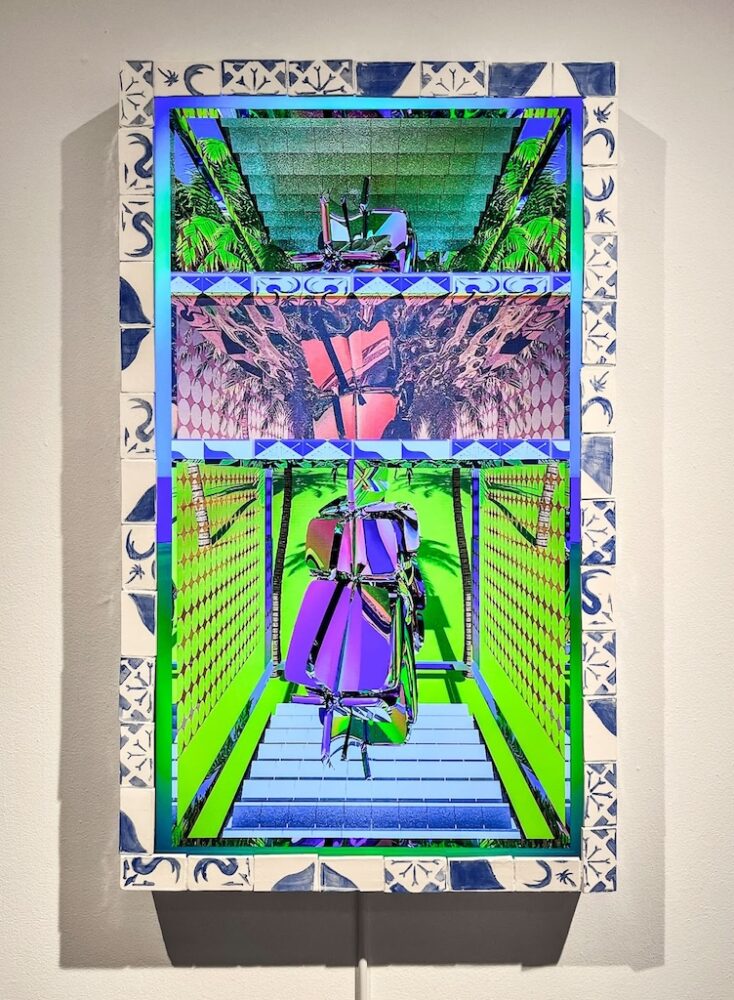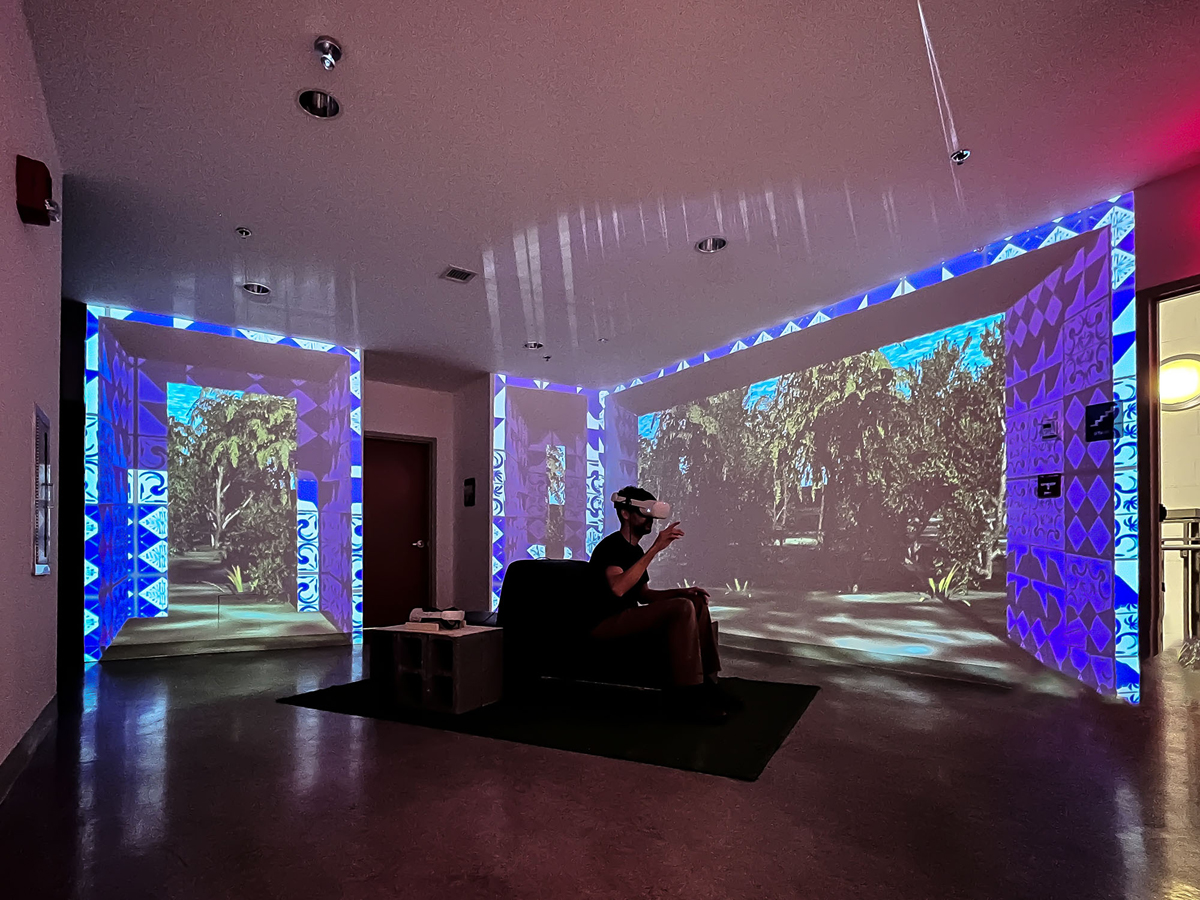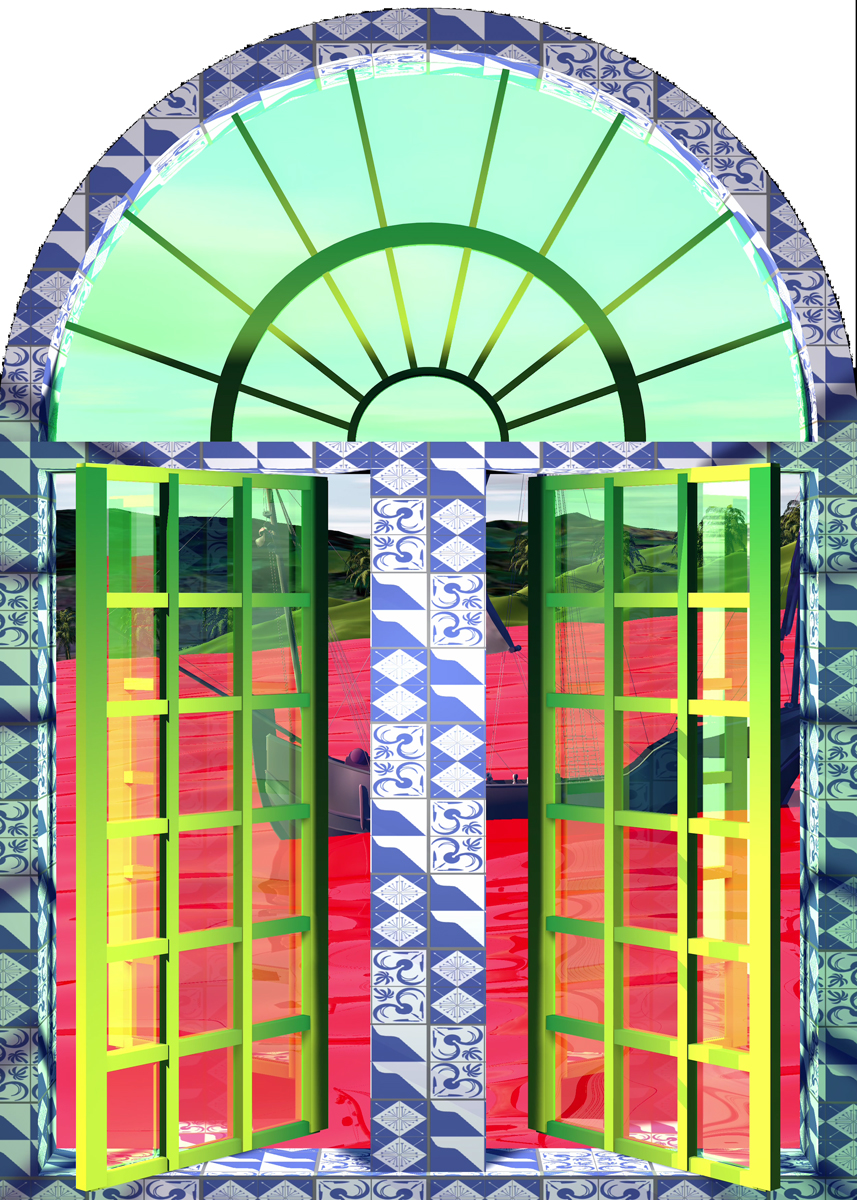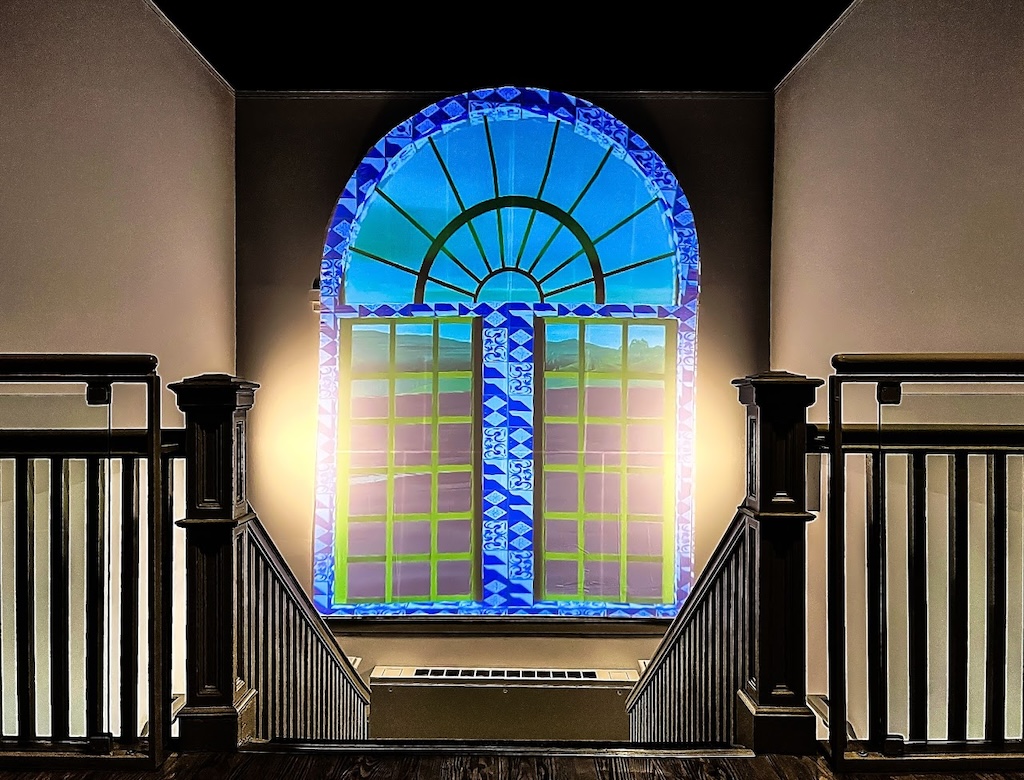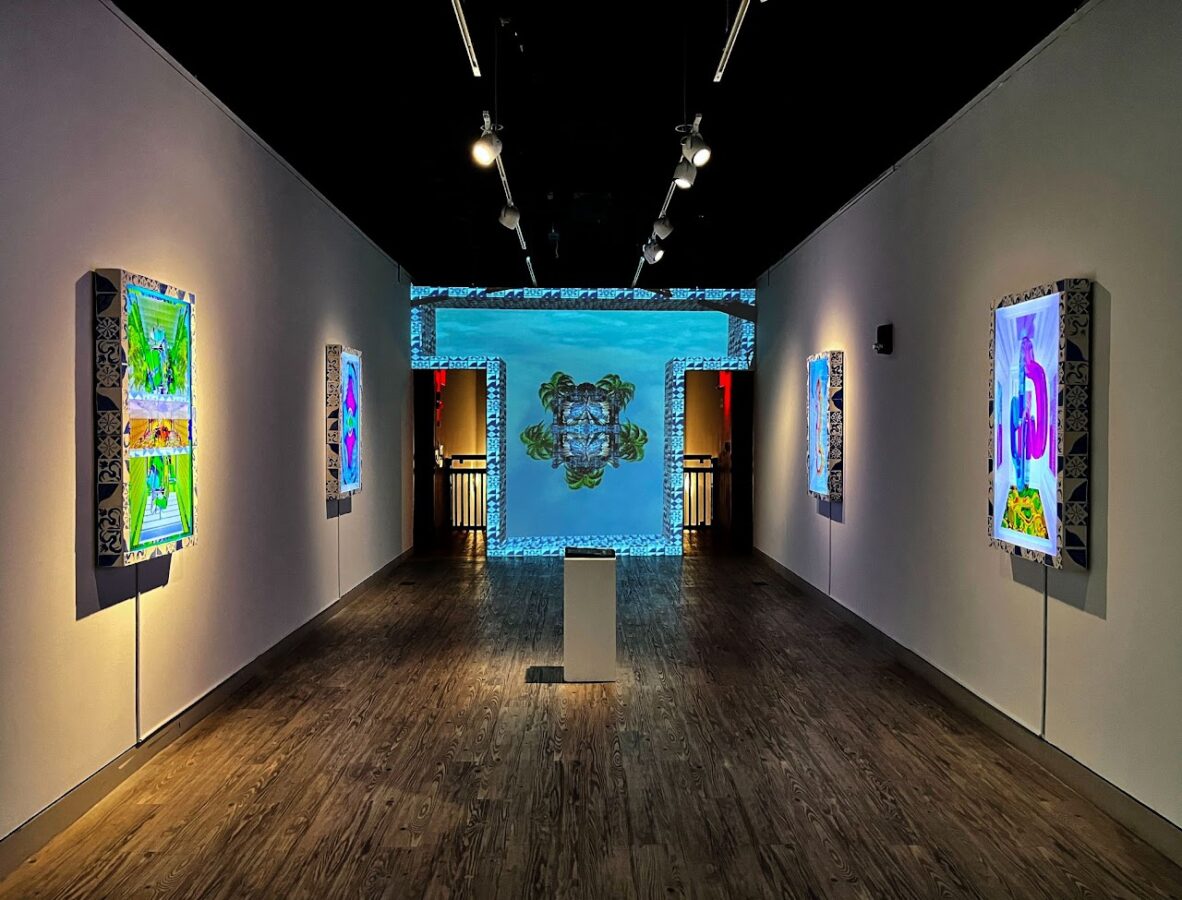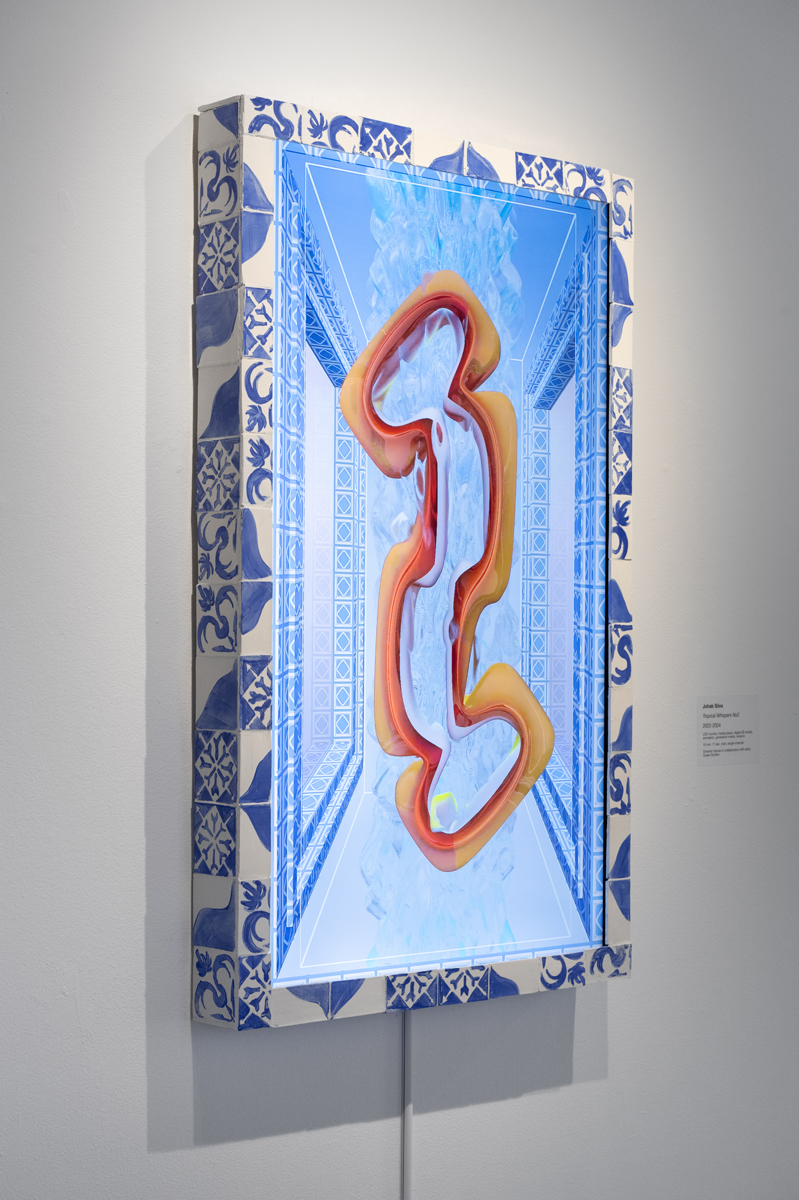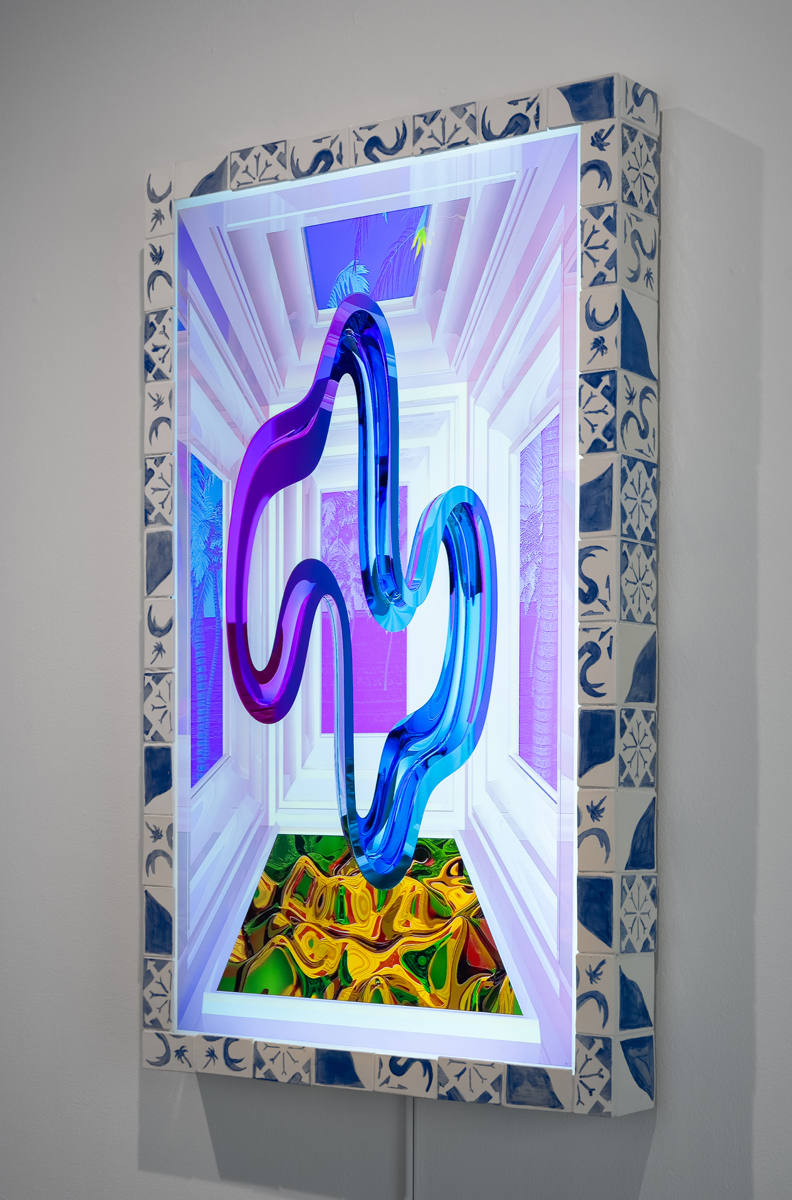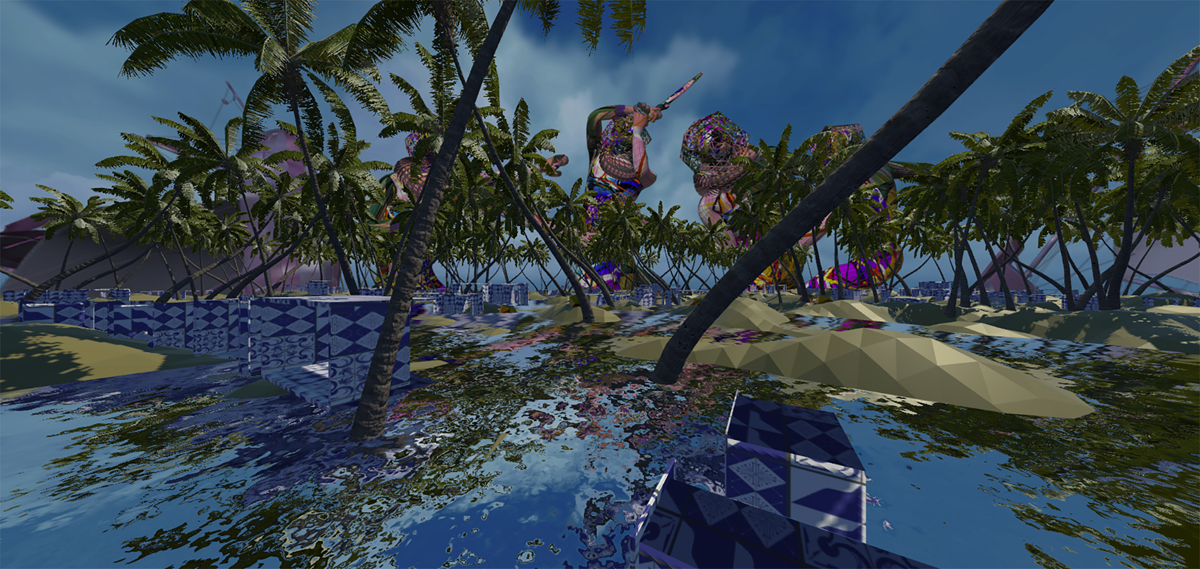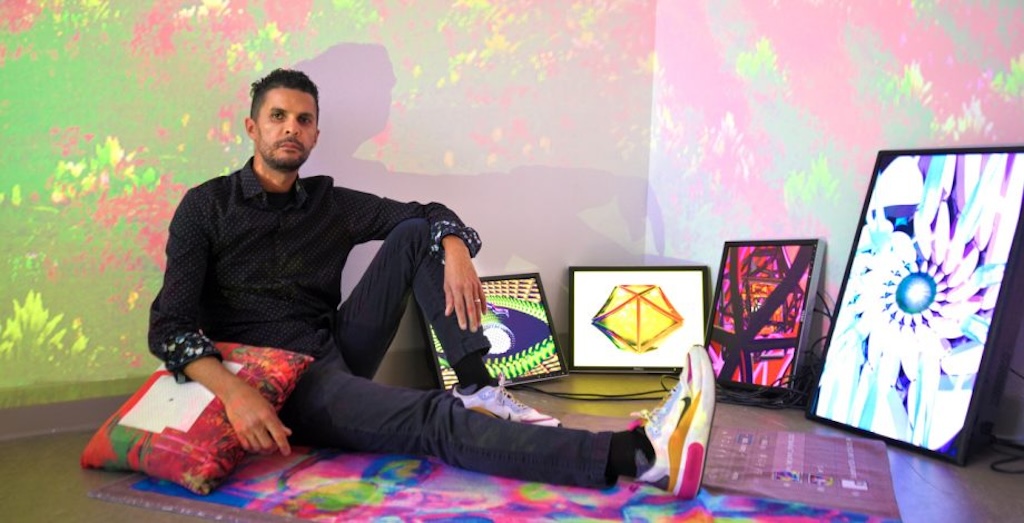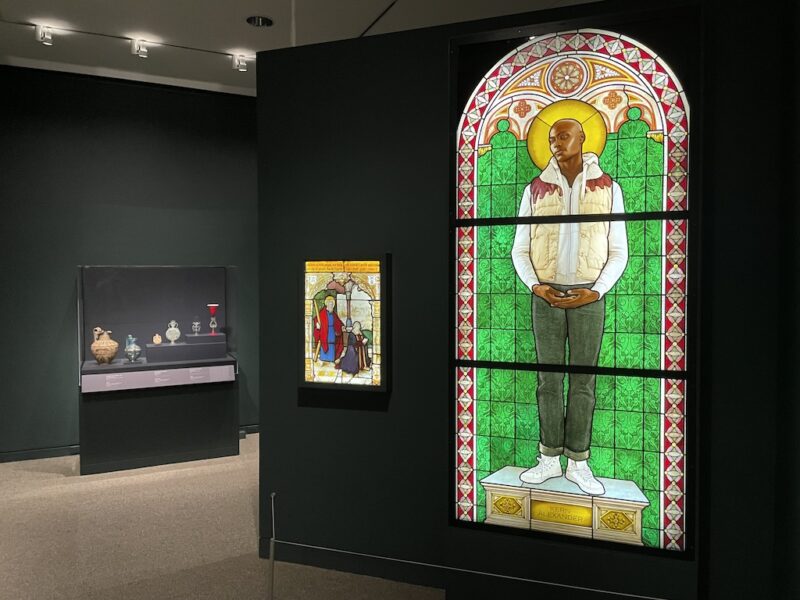I did it. I finally did it. And I’m glad my first time was in the context of art. I’m not a gamer, have never played Wii, don’t give a damn about Pokémon Go, or any other such things. I’m not a Neo-Luddite, just wary of “the new” in general. But I had my first encounters with Virtual Reality (VR) and Augmented Reality (AR)—I didn’t really understand the difference until today—and feel good that they were experienced in the form of art.
Most people feel the other way around, that art is the thing to mistrust, while video games and other forms of digital culture are harmless fun. But for me, it’s artists who push the limits of the latest technologies while also putting them to task. Artists do not passively accept technology as mere frivolity, but actively engage with them as the powerful tools they are, tools that can shape (and even mis- or re-shape) the future of humanity.
In Tales of the New World, a multimedia installation currently on view at the Museum of Contemporary Art Arlington, Brazilian artist Johab Silva takes both his subject and his tools dead seriously. What is Silva’s subject? Well, nothing less than the global cataclysm we find ourselves in—from the lingering effects of colonization, to sustained war and genocide, environmental degradation, and rampant consumerism—Silva is deeply concerned with the most pressing issues facing humanity, but as revealed through the lens of our most advanced technologies. Using the new media tools of Artificial Intelligence (AI), AR, and VR, Silva takes a high-tech approach to exploring the complicated history of the New World.
